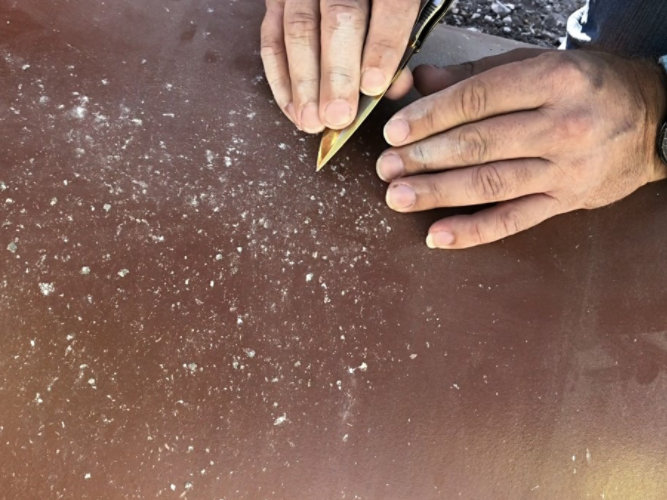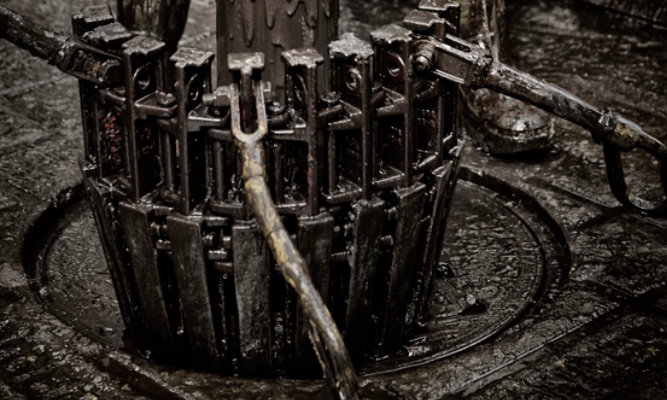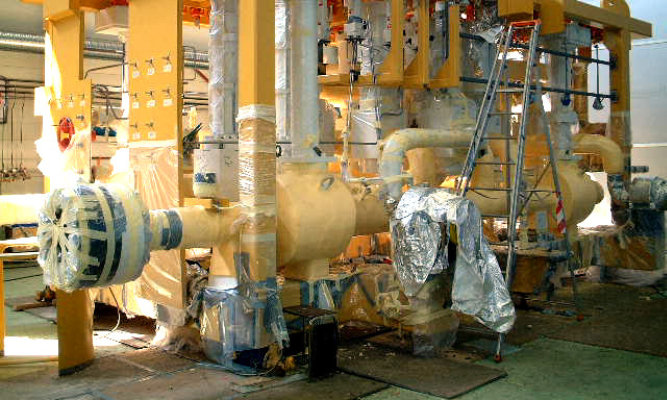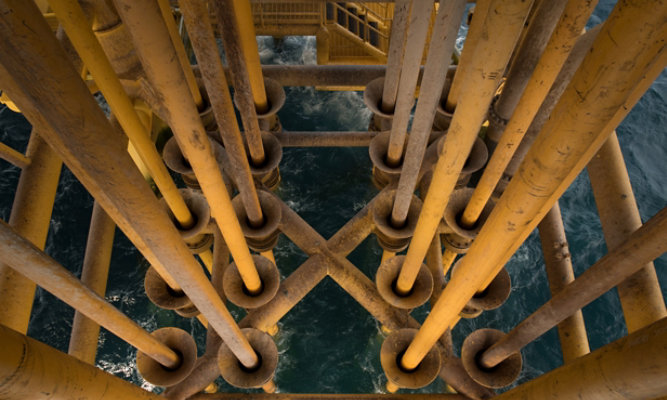The Case for Better Subsea Coatings Testing
Analyzing Coatings Beyond Minimum Requirements Reveals Their True Performance Expectations
by Neil Wilds, Global Product Director – CUI, and Dr. Jeffrey David Rogozinski, Global Product Director – Fusion-Bonded Epoxy/Pipe, for Sherwin-Williams Protective & Marine

Standard testing is required to validate coatings performance in the subsea environment. But too often, such testing proves only that a product or a coating meets minimum requirements. Given the variety of emerging and anticipated trends and needs shaping the offshore industry, this is deemed not enough.
Those influencing factors include:
- More Submerged Assets: More and more offshore production structures are being placed under water, leveraging existing floating assets through the increased use of subsea umbilicals, risers and flowlines (SURF assets).
- Longer Operating Wells: New extraction techniques are extending the lifetime of subsea wells, so equipment that was once intended for a 20-year lifespan is frequently asked to perform much longer. To do so without excessive maintenance, repair and/or replacement costs, producers must rely on coatings that can provide up to 30 years of anti-corrosion protection.
- Hotter Operations: Deeper offshore wells extract hotter oil, resulting in higher pipeline and equipment operating temperatures and larger temperature differentials relative to seawater. Higher-temperature production places significant thermal stress on coatings, which can accelerate the chemical reactions that lead to corrosion damage.
- Unanticipated Delays: Logistical, political and regulatory activities can often lead to subsea projects being delayed, potentially exposing coated pipe and equipment to the damaging effects of ultraviolet (UV) degradation, marine atmospheric corrosion and physical damage for months or more prior to installation. When subsea coatings are not able to meet these unexpected challenges, producers must either risk installation of potentially compromised pipe and equipment, or they must opt either for expensive on-site shelters to protect the equipment or costly, reduced-quality in-field coating remediation.
The above factors will all require confirming extra measures of coatings performance that extend beyond today’s common tests that focus on minimum requirements. That means owners and engineering, procurement and construction (EPC) companies will need to look beyond those standard tests to more comprehensive lab tests and data that correlate more closely to the specific structure being coated and the properties of the selected coating. In addition, tests should factor in the characteristics of the well, the extracted oil and the subsea environment in which the production assets will be used.
That is why, in addition to testing to established industry minimums, the industry is best served by using additional tests that stretch existing norms and explore the structural and mechanical limits of the coatings. In the end, the only way to reliably measure a coating’s long-term performance is to test it “until it breaks.” The process of “breaking” a coating reveals what we need to know about its real performance limits, while the desire to overcome those limits highlights areas for future coatings development.
Coatings Performance Requirements
Before exploring current industry test requirements, let’s look for a moment at the basic performance requirements for a coating system, whether it is used above ground, below ground or subsea:
1. Adhesion: After application and curing, good adhesion ensures a consistent bond between steel assets and coatings at all points. Naturally, this adhesion must remain after the asset is exposed to and works within its operating environment. Examples of poor adhesion include:
a. Cathodic disbondment – loss of adhesion at the steel surface due to the coating reacting with free hydrogen molecules resulting from cathodic current.
b. Brittleness/loss of plasticity due to solvent loss, which can result in the coating cracking or fracturing under bending or flexing force.
c. Corrosion creep as corrosion in an exposed area “undercuts” adjacent coated areas and allows the corrosion to spread.
2. Barrier Properties: To prevent water, oxygen, electrolytes or other corrosion-causing agents from penetrating a coating to reach the protected surface below, coatings form a physical barrier – a tight, net-like, crosslinked chemical structure – that seals the steel surface. Barrier failure occurs when an environmental stress – such as high temperature, UV exposure or chemical attack – expands or opens the barrier net, creating spaces large enough for electrolytes to penetrate through and initiate a chemical attack/corrosion.
3. Damage Resistance: Coating systems must combine flexibility and hardness, protecting against physical damage or coating loss due to impact, abrasion, shear and flexing forces that wear, tear or chip, thus exposing the steel surface to corrosion of chemical attack. To achieve this performance, the coating (or a supplemental protective layer on top of the coating) must be able to absorb or displace temperature, impact or chemical stresses without failing.
What Tests Can Evaluate
So how do you test for the important characteristics in coatings for pipelines and equipment that are to be used above ground, underground and in subsea environments? A wide range of tests are needed to realistically estimate the capabilities of subsea coatings in the full range of real-life conditions. Some important ones include:
- UV degradation, erosion and/or atmospheric corrosion testing is needed in case project delays cause the coated pipe and equipment to be stored outdoors for an extended period.
- Impact resistance/impact damage tests (Figure 1) are required to evaluate the ability of a coating system to resist scratching or abrasions that would expose the steel surface.
- Bending and flexing tests (Figure 2) need to be run to assess whether coatings can remain intact when the underlying pipe or material is subjected to repeated flexing – such as during offshore reel-lay installations.
- Thermal testing is also critical to evaluate whether high operating temperatures or extreme thermal gradients will affect the molecular structure of the coating, changing or reducing the crosslink density that’s essential for barrier protection.
Figure 1. Rock drop testing on this FBE overcoat proved that it can protect the base FBE coating layer from impacts and scrapes that could otherwise expose the steel surface.
Figure 2. Despite flexing this sample pipe in an attempt to crack the applied FBE coating systems, the coatings remained intact, demonstrating their flexibility and damage resistance.
Figure 3. When exposure to UV degradation, atmospheric corrosion and impact damage are likely on pipes, a multi-layered coatings approach is helpful. The base anti-corrosion layer is required to prevent pipeline corrosion, but an intermediate layer can be added to protect the anti-corrosion layer from wear. A UV-blocking layer can also be applied on top to help preserve the first two layers before burying or submerging pipes.
Subsea Tests for Liquid Coatings
Today, liquid coatings applied to submerged subsea carbon and stainless steel assets must conform to NORSOK M-501 Revision 6 Coating System 7B or 7C prequalifications. These require immersion and cathodic disbondment tests, with the 7B guideline for ambient and standard operating temperatures ≤50°C (122°F), and the 7C standard for temperatures above ≥50°C (122°F).
Based on NORSOK M-501 Revision 6 Coating System 7A requirements for assets operating in the splash zone, the 7B guidelines were developed for coatings used to protect submerged equipment used on shallow subsea wells operating at relatively low oil and pipeline temperatures. But in the early 2000s, as drilling went deeper and the extracted oil therefore became hotter, the industry realized the need for coatings that could perform under the stress of higher pressures and temperatures. Therefore, a split in the NORSOK System 7 requirements led to the introduction of a separate 7C prequalification.
However, the NORSOK M-501 7C high-temperature cathodic disbondment test is controversial in industry circles. First, it applies over an extremely wide range of temperatures. Second, it does not account for high temperature differentials between the interior and exterior of pipelines and production equipment, such as when extremely deep, hot oil is moved through a coated pipe in a very cold environment like the North Sea. And lastly, when these tests are conducted at extreme temperatures – 95°C (205°F) and higher – the conditions of the test diverge significantly from real-life conditions. As subsea wells get significantly hotter, approaching 180-200°C (356-392°F), the high-temperature cathodic disbondment test is at its design limitation, and this can sometimes be seen in the results of the test. Further work must be done to modify the test to accommodate these higher temperature conditions.
Cathodic disbondment occurs when adhesion is lost between the coating and substrate. This adhesion loss is due to disruption of the hydrogen bonding from the reaction between salt water, oxygen and electricity in the cathodic disbondment test cell. This reaction produces hypochlorite, one of the agents that can cause coating disbondment. At lower water temperatures, the amount of oxygen dissolved in seawater is sufficient to fuel this reaction, which is maximized at temperatures between 65-80°C (149-176°F).
However, because the dissolution of oxygen in seawater varies inversely with temperature, the level of oxygen present in the seawater used in high-temperature tests should be quite low, which would result in much lower levels of hypochlorite formation. But the structure of the apparatus used to conduct the 7C test artificially oxygenates high-temperature seawater to unrealistically high levels, producing an unrealistically high level of hypochlorite formation. This factor, combined with the fact that that the test places the anode in very close proximity to the cathodic surface, dramatically increases the potential that high hypochlorite concentrations will reach the vulnerable/exposed sections of the pipe or equipment. With these conditions not accurately mimicking real-world conditions, tested coatings could fail in the lab long before they would in the field.
Among liquid coatings that pass the NORSOK 7C tests, differences in the coating formulations can and do affect long-term performance. For example, liquid subsea phenolic epoxy coatings vary based on their solids content, ranging from formulations comprised of about 70% solids/30% solvents to newer ultra-high solids formulations that virtually eliminate solvents. Though both might pass a NORSOK 7C test and show good high-temperature performance, solvent loss triggered by exposure to seawater can cause solvent-based coatings to lose plasticity over time. This loss makes the coatings less flexible and more prone to brittleness, cracking and breakage under impact or flexing stress. By contrast, ultra-high solids liquid formulations eliminate the “free space” associated with solvent content, enabling them to produce a densely crosslinked structure that retains plasticity indefinitely. However, unless you recognize these differences and then test the coatings in real-life conditions, you might not be able to recognize that potentially important disparity in performance.
Clearly, current prequalification tests are minimums. Therefore, producers are best served by taking testing further to truly evaluate a product’s performance.
Subsea Tests for Powder Coatings
Powder coatings, specifically single-layer fusion-bonded epoxy (FBE) coatings, must meet ISO 21809-2:2014 Series requirements for the corrosion protection of buried or submerged bare steel pipe. The latest generation of powder-based FBEs were designed to provide excellent adhesion, corrosion protection and durability in high-temperature offshore environments. Coatings applicators also benefit from these solvent-free formulations since they are easier to apply, require less energy for curing and reduce regulatory compliance concerns.
However, while coatings tested to ISO 21809-2:2014 meet minimum underground and subsea application requirements, they do not necessarily meet real-world requirements. For example, pipe and equipment prepared for underground or subsea installation may be subject to delays – whether logistical, political, financial or regulatory – that may leave the assets sitting in yards, docksides, ships or project staging areas for months or years prior to installation. In these locations, epoxy-based coatings intended for subsea installation and use are typically exposed to unanticipated harm from UV degradation, atmospheric corrosion and impact damage. Symptoms of this damage can be seen in:
- Chalking, washing off or discoloration of the coatings
- Cracking, blistering or tearing of the coatings
To limit or prevent such exposure, this equipment either requires special storage and monitoring (which is a significant operating expense for the equipment supplier, installer or producer), inspection and in-field repair of all assets before installation, or the protection of an additional layer or two of protective coating, applied atop the base anti-corrosion FBE layer, that is capable of preventing UV, atmospheric and/or impact damage (Figure 3).
The International Association of Oil and Gas Producers (IOGP) has anticipated this need, and therefore has produced a standard that recommends that all coatings used for underground and subsea pipelines and equipment be tested not only for high-temperature cathodic disbondment in subsea environments (as in NORSOK M-501 7C), but also for protection against UV degradation and atmospheric corrosion, as specified in ISO 12944-CX. This ISO standard directly addresses the threat that unexpected delays – and the resulting exposure to UV light, atmospheric moisture and salt spray on docksides or in outdoor storage – could initiate coating degradation and corrosion that undermine the quality of epoxy coatings intended to provide subsea corrosion protection.
The cyclic aging tests in 12944-CX – cycles of three days of UV exposure/moisture condensation, plus three days of salt spray and reduced temperatures – provide what is today the “acid test” for epoxy coatings used in offshore environments. And not all epoxy coatings can pass this very demanding test. Even the ones that pass are likely to show some bleaching and yellowing – the first signals of coating breakdown – when placed under these conditions. The test also requires that the coating on test panels be scribed so that corrosion is initiated on the underlying metal. As that scribe corrodes, the test mimics the severe “undercreep” that can occur when corrosion works its way under the coated surface and spreads. For example, a coated Christmas tree structure or other pre-coated assets that are damaged in transit and then left dockside in a remote location could within 12-18 months develop severe corrosion requiring very expensive repair, often in less-than-ideally controlled circumstances. From an operating expense standpoint, such repairs (or the prospect of premature corrosion) are a nightmare. So, the IOGP test standard makes a lot of sense in that it anticipates and addresses what can and does happen in the real world.
Testing to Failure
Today, industry coating tests provide a limited set of minimum performance standards. And many coatings can meet those minimums. But, to the degree that these standards fail to address real-world situations, they may offer little or no decision-making data to predict longer-term performance, a performance advantage relative to other coating choices, or lower operating expense or lifecycle costs. To get the best results requires a multi-step strategy that tests and specifies coatings based not only on in-situ performance requirements, but also on a realistic assessment of all of the circumstances, including potential delays, that can affect your project. When assessing the possible use of a newer technology, apply your judgment, based not only on the track record of the coating and supplier, but also on detailed knowledge of a coating’s structure and mechanical properties, gained through “test to failure” methods.
ABOUT THE AUTHORS
Neil Wilds is Global Product Director – CUI for Sherwin-Williams Protective & Marine. With 36 years of technical coatings experience, Wilds develops strategies for long-term asset protection and directs the development of specifications and testing programs. He is a member of several coatings associations including AMPP, NORSOK M501, the International Organization for Standardization (ISO) and others. Contact: Neil.Wilds@sherwin.com
Dr. Jeffrey David Rogozinski is Global Product Director – Fusion-Bonded Epoxy/Pipe for Sherwin-Williams Protective & Marine. With more than 30 years’ experience in coatings and academia, he is responsible for developing protective coatings, powder coatings, resins and additives for the oil and gas, pipeline, and bridge and highway markets. His coatings science emphasis is on researching and testing polymer synthesis and structure-property characterization. He is a member of several coatings associations and a consultant for global specification writing for CSA Group, the International Organization for Standardization (ISO), ASTM International, AMPP and others. Rogozinski holds a doctorate in applied science for polymer and composite chemistry. Contact: Jeffrey.Rogozinski@sherwin.com
Discover More
Industry Expertise and Innovation
See how we help customers find customized solutions for their project and application challenges.
Our Oil & Gas Expertise
Explore our industry solutions and technology to help protect your assets.
LEARN MOREProduct Lookup
Find out more about our innovative coatings for a variety of industries.
FIND A PRODUCT

